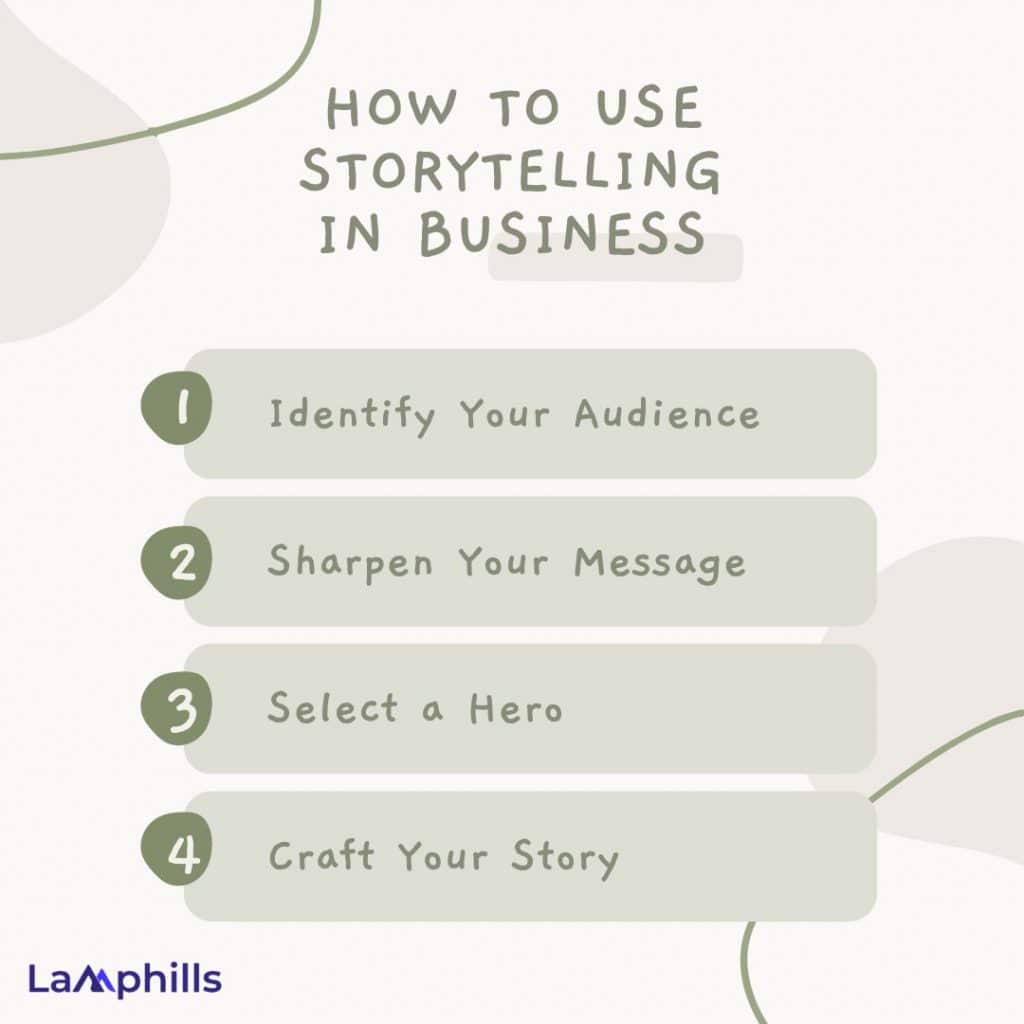Storytelling is a powerful tool in business. It connects customers emotionally, going beyond just facts. When businesses use stories, they engage their audience, making their brand memorable. If you’re wondering how to craft stories that resonate, you’re in the right place. I’ll take you to “Storytelling Examples for Business,” which captures attention and drives results. Understanding these examples can elevate your marketing game, making you more valuable in your field. Curious about how these stories work? By the end of this article, you’ll have clear, practical “Storytelling Examples for Business” that you can apply to your own strategies.
Key Takeaways
- A brand might highlight its origins by sharing anecdotes about its founders and the values that drive the company.
- Storytelling offers a powerful way for businesses to create emotional bonds with their audience.
- When brands create memorable narratives, they remain top-of-mind for consumers.
- Every brand story needs a challenge or problem that your business has to overcome.
- With storytelling, you’re not just selling a product or service—you’re showing the value it brings
Storytelling Examples For Business
Business storytelling is the art of using narratives to convey a message, engage an audience, and drive action. It goes beyond just presenting facts and figures; it taps into emotions, making information relatable and memorable. In the business world, effective storytelling can shape brand identity, connect with customers, and inspire employees.
For example, consider a tech company launching a new product. Instead of just listing features, they share a story about how this product changed the life of a real customer. This customer might have struggled with a common problem that the product solves. By narrating this journey, the company creates an emotional connection. Customers see themselves in that story and feel motivated to purchase.
Another instance is in internal communications. A manager might share a personal story about overcoming a challenge at work. This can foster a sense of camaraderie among team members. They see their leader as relatable, and it encourages them to open up about their own struggles. This kind of storytelling builds trust and strengthens team dynamics.
Business storytelling also plays a crucial role in marketing. A brand might highlight its origins by sharing anecdotes about its founders and the values that drive the company. This approach humanizes the brand, making it more approachable and authentic. Customers appreciate knowing the story behind the brand, leading to stronger loyalty.
Having explained what business storytelling is all about, let me take you through some real life examples of business storytelling.
#1. Nike — “Just Do It”

Nike’s “Just Do It” campaign is more than a slogan; it’s a rallying cry. This storytelling approach features athletes from all walks of life, showing their struggles and triumphs. The campaign includes powerful visuals and personal stories, emphasizing determination and resilience. By highlighting real experiences, Nike taps into the emotional drive of consumers, inspiring them to overcome their own challenges. This connection transforms casual buyers into brand advocates, making “Just Do It” synonymous with perseverance.
#2. Burt’s Bees — “The Nature of Burt”

Burt’s Bees takes storytelling to heart by sharing the journey of its founder, Burt Shavitz. From selling beeswax candles in his truck to creating a natural skincare empire, Burt’s story embodies authenticity and simplicity. The brand emphasizes its commitment to sustainability and natural ingredients, resonating with consumers who value eco-friendly products. This narrative not only honors Burt’s legacy but also fosters a sense of community among those who appreciate natural living.
#3. Thinx — “MENstruation”

Thinx tackled a taboo subject head-on with their “MENstruation” campaign. By featuring men discussing menstruation openly, they shattered societal norms surrounding periods. This bold storytelling choice sparked conversations about gender and inclusivity, making it relatable to a diverse audience. Thinx positions itself as a brand that embraces transparency and challenges stereotypes, making its message powerful and engaging.
#4. Land Rover — “The Land of Land Rovers”

Land Rover’s storytelling focuses on adventure and exploration. Their campaigns transport viewers to breathtaking landscapes, showcasing the vehicle’s capabilities in rugged terrains. By framing the narrative around adventure seekers and explorers, Land Rover appeals to consumers’ desires for freedom and discovery. This storytelling approach establishes Land Rover as more than a car brand; it becomes a companion for life’s adventures, creating a strong emotional bond with customers.
#5. Patagonia — “Don’t Buy This Jacket”

Patagonia’s “Don’t Buy This Jacket” campaign takes a bold stand on sustainability. By urging consumers to reconsider their purchases, the brand positions itself as a leader in environmental responsibility. The storytelling revolves around the impact of consumerism, encouraging mindfulness and conscious choices. This unconventional approach resonates deeply with environmentally conscious consumers, solidifying Patagonia’s reputation as a brand that truly cares about the planet.
#6. Pepsi — “Live For Now”

Pepsi’s “Live For Now” campaign captures the essence of youth and spontaneity. Through vibrant storytelling, the brand showcases moments of joy, music, and cultural experiences. This narrative invites consumers to embrace life and celebrate every moment. By connecting with a younger audience, Pepsi creates a sense of community and excitement, positioning itself as a brand that champions living in the present.
#7. Subaru — “For All You Love”

Subaru’s storytelling revolves around family, love, and loyalty. Their ads often feature heartwarming moments with families and pets, emphasizing the importance of togetherness. This emotional narrative resonates with consumers who see Subaru as more than just a car; it’s a vehicle for life’s memorable journeys. By highlighting relatable experiences, Subaru builds strong emotional connections, reinforcing brand loyalty.
#8. Warby Parker — “How Warby Parker Glasses Are Made”

Warby Parker invites consumers into their world with the story behind their glasses. By showcasing the craftsmanship and ethical production process, they emphasize quality and transparency. This storytelling approach not only highlights the brand’s commitment to affordability and style but also builds trust with consumers. By sharing their values, Warby Parker fosters a strong connection with those who appreciate socially responsible businesses.
Value of Storytelling in Business
Storytelling offers a powerful way for businesses to create emotional bonds with their audience. By weaving narratives into their strategies, companies can engage customers, motivate employees, and foster loyalty. I will explore the key values of storytelling in business and help you see how these narratives can transform interactions and drive success.
#1. Engages Customers
Storytelling captivates audiences by tapping into emotions. When brands share personal stories or customer testimonials, it humanizes the company. For instance, a small bakery might tell the story of how they started baking to preserve family recipes. This authenticity draws in customers who appreciate the background and feel more connected. Engagement increases when customers see themselves in these stories, turning casual viewers into loyal fans.
#2. Helps Workers Comprehend a Vision
A clear vision can often feel abstract, but storytelling makes it tangible. When leaders share stories about the company’s founding or pivotal moments, it brings the vision to life. For example, if a tech startup shares a narrative about overcoming early struggles to innovate, employees feel inspired and aligned. They understand their contributions matter and see how their daily efforts drive the company forward. This connection fosters a motivated and engaged workforce.
#3. Enhances Market Competitiveness
In a saturated market, storytelling can be a game-changer. Unique narratives help brands carve out their space. For example, Dove’s “Real Beauty” campaign told stories of real women, challenging beauty standards and resonating with many. This approach distinguished Dove from competitors, making the brand synonymous with authenticity and empowerment. When customers identify with a brand’s story, they are more likely to choose it over others.
#4. Creates a Memory
Stories stick in our minds longer than statistics. When brands create memorable narratives, they remain top-of-mind for consumers. For example, Apple often uses storytelling to showcase how their products change lives. The “Shot on iPhone” campaign shares stunning photos taken by everyday users, making the brand memorable. Consumers are likely to remember not just the product but also the emotional stories behind it, creating lasting associations.
#5. Boosts Prospects to Take Action
A well-crafted story can act as a catalyst for action. When prospects relate to a story, they’re more inclined to respond. Take the example of charity campaigns that share personal stories of those they’ve helped. When potential donors see the direct impact of their contributions through storytelling, they feel compelled to give. This emotional pull can lead to higher conversion rates and more committed customers.
#6. Enhances Customer Commitment
Storytelling fosters deeper relationships between brands and customers. When customers identify with a brand’s story, they develop loyalty that goes beyond transactions. For instance, Warby Parker shares stories about their “buy a pair, give a pair” model. This narrative resonates with socially conscious consumers, building a community of loyal advocates. When customers feel part of a brand’s story, they are more likely to remain loyal and even share that story with others.
Here’s a concise checklist to guide your storytelling efforts
Tips for Enhancing Storytelling in Business
Whether you’re pitching a product or sharing your brand’s journey, here are some straightforward tips to elevate your storytelling.
- Make It Relatable: Connect your story with universal experiences. Share themes like overcoming adversity or striving for success to draw people in and foster connection.
- Keep It Simple: Focus on your main message and avoid jargon. Use clear language to convey benefits. For instance, say, “We help you understand your customer better,” instead of using technical terms.
- Practice Your Story: Rehearse your story to make it smoother and more natural. Share it with friends or colleagues and ask for feedback. The more you tell it, the more confident you’ll become.
- Be Authentic: Share both your challenges and successes. When a tech startup openly discusses its setbacks, it builds trust and community. Authenticity resonates with people.
- Provide Value: Ensure your story offers something beneficial to your audience. Share tips or insights that enhance customer satisfaction and loyalty.
- Make It Fun: Add elements that entertain your audience. Use humor or relatable anecdotes to keep them engaged and make your message memorable.

How to Use Storytelling in Business
When you share stories, you create an emotional bond that resonates with your audience. Here’s a deeper look at how to use storytelling effectively.
#1. Identify Your Audience
Understanding your audience goes beyond demographics. Consider their values, interests, and pain points. For example, if your audience consists of young professionals in the tech industry, they might care deeply about innovation and work-life balance.
You could share a story about a tech startup founder who struggled with burnout. Highlight how your product helped streamline their workflow, allowing them to reclaim time for personal pursuits. This not only speaks to their professional needs but also resonates with their desire for a balanced life.
#2. Sharpen Your Message
Clarity is key in your message. Ask yourself: what do you want your audience to remember?
For instance, if you’re promoting a new eco-friendly packaging solution, focus on the environmental impact. Share a narrative about a small business owner who switched to your packaging. Illustrate their initial concerns, the decision-making process, and the positive changes they experienced. Maybe they saw a boost in customer loyalty from eco-conscious buyers. This clear message not only informs but also inspires others to consider making similar changes.
#3. Select a Hero
Choosing the right protagonist makes your story relatable. This character should embody the challenges your audience faces.
Consider a local coffee shop owner who had to adapt during the pandemic. Describe their struggles—lost sales, employee layoffs, and uncertainty. Then, narrate how they turned to your consulting services for help. Detail the strategies you implemented together and the eventual turnaround. This human element shows that your brand understands real-world challenges and can provide solutions.
#4. Craft Your Story
Structure your story effectively. Start with a hook that captures attention, like a surprising statistic or an emotional anecdote.
For example, begin with the coffee shop owner feeling overwhelmed as sales plummeted. Create tension by showing their worries about keeping the business afloat. Then, introduce your role and the strategies you suggested. Finally, culminated in a triumphant resolution: the shop not only survived but thrived by pivoting to online sales and community engagement.
Remember to use vivid details to bring the story to life. Describe the aroma of coffee, the ambiance of the shop, or the emotions during the turning point. This immersive storytelling keeps your audience engaged and makes your message memorable.
How to Write a Story For Your Business?
To write a compelling story for your business, start by focusing on the conflict. Every brand story needs a challenge or problem that your business has to overcome. This conflict is the hook that draws people in. It shows the obstacles that make your journey real and relatable.
Next, highlight the status quo, the situation before the conflict. Describe what your business was like before facing the challenge. This sets the stage and gives context.
Finally, focus on the resolution. Show how your business overcame the conflict. The resolution is where you demonstrate the strength of your brand and how it made a difference.
By emphasizing conflict, status quo, and resolution, your brand story will be more engaging and memorable.
How do You Structure a Business Story?
To structure a business story effectively, follow these six steps:
- Set the Scene: Start by establishing the context. Describe where and when the story takes place to give your audience a clear picture of the situation.
- Introduce the Main Characters: Highlight the key players involved. These could be your team, clients, or other stakeholders.
- Face the Challenge: Present the main problem or obstacle. This is the core of your story and what will engage your audience.
- Overcome the Challenge: Show how the challenge was tackled. This is where you showcase solutions, strategies, or decisions made.
- Get the Result: Share the outcome. Be specific about the positive changes, improvements, or successes achieved.
- Make it Relevant: Tie the story back to your audience. Explain why it matters to them and how it applies to their situation or business.
This structure ensures your story is clear, engaging, and meaningful to your audience.
Why is Storytelling Important in Business?
Storytelling is important in business because it connects with people on an emotional level. Instead of just throwing out facts, a story makes your message memorable. It builds trust and loyalty by helping customers relate to your brand. With storytelling, you’re not just selling a product or service—you’re showing the value it brings. It also makes your brand stand out in a crowded market, giving customers a reason to choose you. People remember stories more than numbers. That’s why good storytelling drives engagement, increases sales, and strengthens your brand.
Related Articles
- 16 Compelling Brand Video Examples and 10 Tips for Creating One
- Best StoryBrand One-Liner Examples to Inspire Your Messaging
- How to Use Product Storytelling to Connect with Customers and Increase Sales






